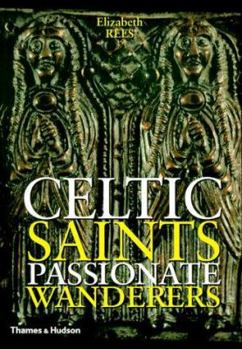Celtic Saints: Passionate Wanderers
Select Format
Select Condition 
Book Overview
Throughout the Celtic world, in Britain, Ireland and France, the legacy of the Celtic saints remains visible. Churches, place names, carved inscriptions, healing springs and local lore all stand as a... This description may be from another edition of this product.
Format:Hardcover
Language:English
ISBN:0500019894
ISBN13:9780500019894
Release Date:June 2000
Publisher:Thames & Hudson
Length:208 Pages
Weight:1.30 lbs.
Dimensions:1.0" x 6.5" x 9.3"
Customer Reviews
1 rating
Mixes fact and fiction
Published by Thriftbooks.com User , 16 years ago
This is a very nice book by a very nice person. There's an excellent gazetteer showing how to get to some of the places she mentions and she is tremendously enthusiastic about her subject. The main problem is that she mixes historical fact with legend. The very existence of many of these "saints" is doubtful. What would happen would be that a name got attached to a place and then many centuries later someone would make up a story to go with the name. Then the story would get embellished. In many cases the stories were made up as late as the nineteenth century, although these saints are supposed to have lived in the sub-Roman period, the time between the Romans leaving Britain and the Anglo-Saxons coming in. The Roman Empire had been Christian for a hundred years when they left. It's a very dark period without much in the way of historical documentation. To take one example; there was a church in a place called St David's that had been in existence for a long time by the tenth century, when the Annales Cambriae were written. The writer of the Annales Cambriae merely put in St David's name and gave a date for his birth some time in the fifth century. In the 11th century a monk at St David's wrote a "life" of the supposed St David, which is what Rees largely treats as authentic history. To be fair to her she usually, but not always, prefaces some such stories with "according to legend" or "it is said that" but she sneaks it in so that you may not notice it. St. Patrick, St Columba, St Aidan and St Ninian are fairly well authenticated from near contemporary writings, including St Patrick's own memoirs. Bede's Ecclesiastical History of England, written in the eighth century confirms some of the data. Rees keeps mysteriously referring to people as missionaries, when they were traveling in lands that were already Christian. She has Welsh missionaries going to Cornwall to convert the Cornish. I couldn't quite figure that out. She assumes a certain knowledge of Celtic languages, which is needed to explain some of the changes the names underwent. Lenition and mutation in these languages alters the beginning of words, so that the mutated forms are very different. Even allowing for that I couldn't grasp how Kentigern became Mungo. Almost all the references are to secondary sources in English. A very nice book by a very nice person, but niceness doesn't always mean accuracy.





